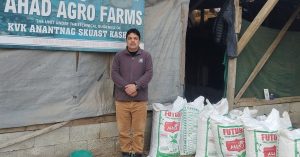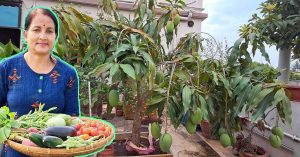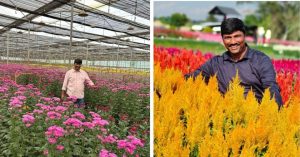‘There’s No Age Limit For Learning’: Started at 63, Woman Earns Lakhs Growing Saffron
Shubha Bhatnagar, a 63-year-old homemaker, envisioned growing saffron indoors and providing employment to rural women. With her family’s help, she started Shubhavni SmartFarms, which uses aeroponics to grow saffron.

In May 2023, Shubha Bhatnagar initiated a rather interesting dinner table conversation. She shared her dream of cultivating saffron indoors and providing employment to rural women in the nearby villages. A homemaker, the 63-year-old was “free of responsibilities” and wished to embark upon a journey of self-reliance by becoming an agriprenuer.
On the dinner table were two engineers: her son and daughter-in-law, and her husband, who runs a cold storage business. They were intrigued by her idea and immediately started looking at how to make her vision a reality.
Conversations in the following weeks and months that followed were no longer about the everyday mundanities, but rather about how saffron could be cultivated indoors and how they could achieve the necessary climatic conditions.
Saffron, a highly valued spice, is exclusively grown in Kashmir, benefiting from its unique soil and weather conditions. Through trial and error, they replicated the climatic conditions of Kashmir in a cold storage room in Mainpuri using IoT (Internet Of Things).
Thus, by integrating technology, they planted the authentically sourced seeds in the cold storage chamber in August 2023, yielding their first harvest approximately three months later. Named ‘Shubhavni SmartFarms,’ they commenced selling their first produce of two kilograms of saffron earlier this year. They have sold over Rs 8 lakh worth of saffron and employed 25 women so far.
Here’s how Shubha achieved this remarkable feat.
A business trip to Kashmir
After completing her MA (Master of Arts) in Hindi from Shikohabad, Shubha got married and moved to Mainpuri. She spent the next 40 years of her life taking care of her two children: a son and daughter, and later her grandchildren.
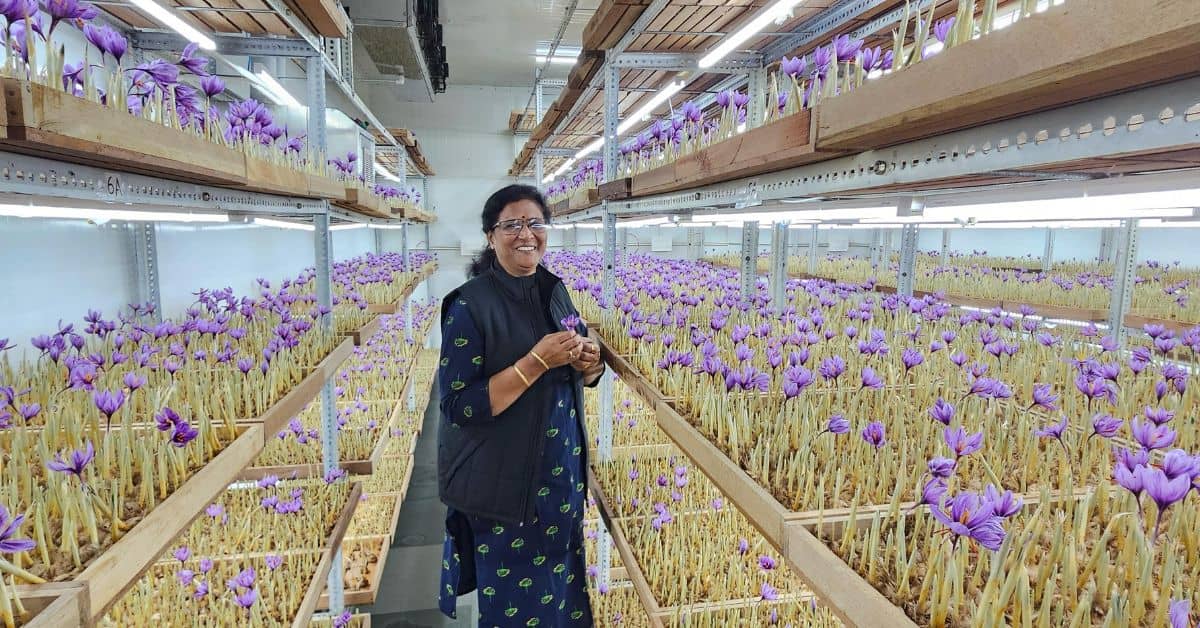
It was only in the past few years that she started looking for avenues to start a business. “I wanted to put my time and life to good use. Luckily, I’m healthy and ready to do some hard work. At this stage of life, I want to find some purpose and meaning to it,” shares Shubha.
As agriculture is a major occupation in Mainpuri, she started looking at possible options of crops that could be grown indoors, thanks to her husband’s business because cold storage is a requirement for indoor farming.
“I would often meet farmers and women who worked as helpers in fields. They had a tough time providing for their families and educating their women. I wanted to employ these women through whatever venture I began,” Shubha tells The Better India.
She finally shortlisted mushrooms and saffron after months of research and feasibility studies, and decided to go ahead with saffron.
Known as kesar in Hindi, saffron is one of the most expensive spices globally. Iran holds the title of the largest producer of saffron, with India following suit. Within India, this spice finds cultivation exclusively in Jammu and Kashmir, owing to its favourable climate.
Shubha’s son Ankit started researching ways to grow the spice indoors using aeroponics. He also looked into the technology and sensors needed to monitor the crop.
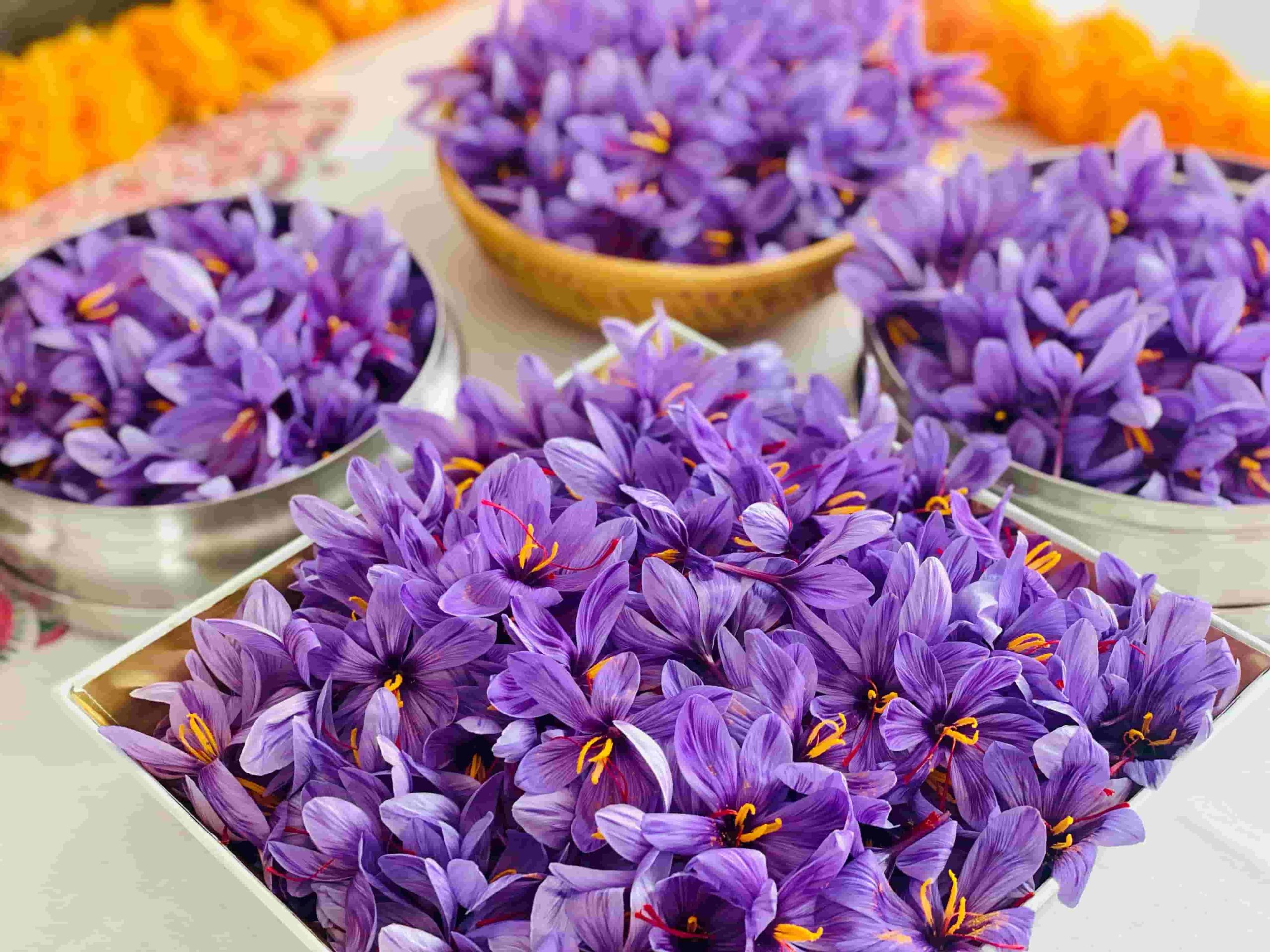
Meanwhile, Shubha faced a dilemma regarding procuring seeds or saffron bulbs. She wasn’t content with simply ordering them from Kashmir without assessing the quality and gaining insights from local farmers. To address this, the family embarked on a trip to Kashmir for a week, engaging with farmers, immersing themselves in the cultivation process, and learning the dos and don’ts directly from the locals.
“We met about 25 to 30 farmers in Kashmir and spent many days with them. We wanted to learn about the kind of soil they use, the process of cultivating saffron, how long it takes, and which temperatures saffron thrives in. We also bought the bulbs from them,” says Ankit.
After coming back, Shubha set up a cold storage room of 560 square feet and started with 2,000 kg of saffron bulbs.
How do you grow saffron indoors?
After getting the saffron bulbs from Kashmir, which look like garlic pods, the first step was to dry them in a room and later aerate them for three days. They had to be checked, cleaned and turned every few hours by hand, which is traditionally done by women in Kashmir. Each seed was checked for moisture and rot, and any extra skin was removed through a process called silvering.
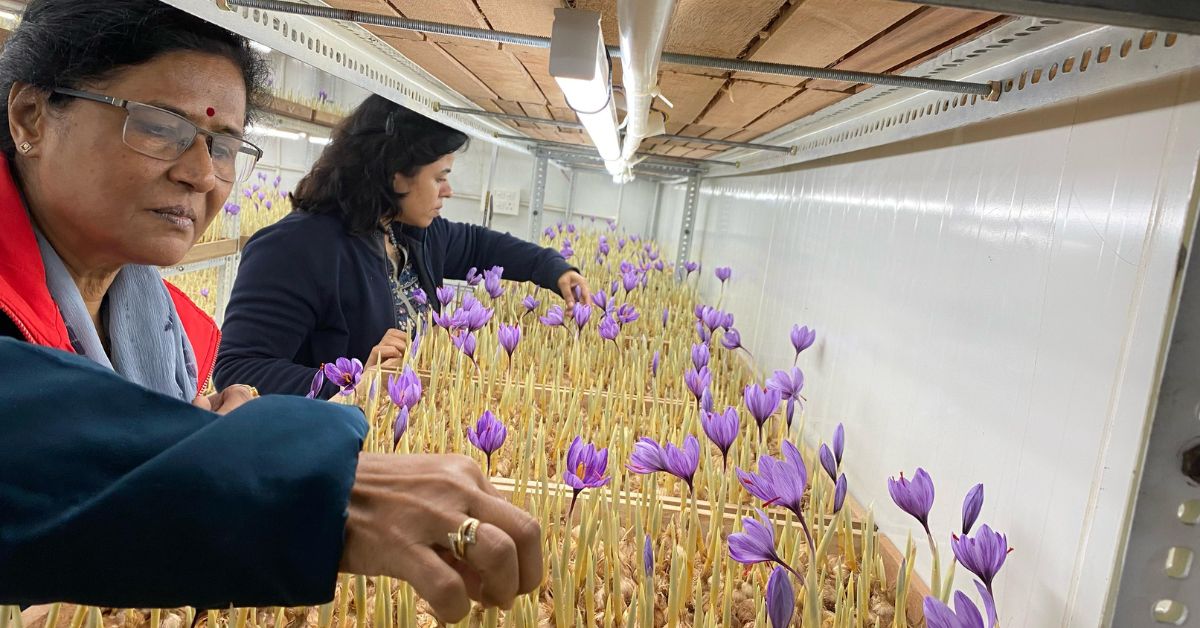
Once the seeds were aerated, they were placed in a cold room in vertical trays on racks. “There should be no water, moisture or humidity,” informs Ankit.
The bulbs started growing and buds emerged after a few days. Then, the challenge was to know when to provide light to the buds and at what temperature. While the beautiful valleys of Kashmir provide the perfect ambience which the buds enjoy, replicating them 1,200 km away was a massive task.
“In Kashmir, the bud receives light only when it comes out of the soil. Learning at what stage that happens and providing the right temperature was the biggest challenge. When we started, we placed bulbs in 18 racks in six rows and provided different temperatures and light to each rack to judge which one worked the best,” shares Ankit.
To achieve this, Shubha and Ankit went through 10 years of saffron production data in Kashmir. They found that the best harvest was achieved in 2015-16 and replicated the temperatures of that year. They developed a programme using IoT devices and sensors to maintain the right conditions and a controlled environment through aeroponics.
In about 60 days, the beautiful purple flower emerged and was ready for harvest!

Each saffron flower has three components — the stigma, which is used for consumption; the stamen, which is yellow and used in the textile industry; and the petals, which are purple and used in the textile industry too.
Once harvested, the stigma, more commonly known as saffron, must undergo drying and packaging. Shubhavni sells one gram of saffron for Rs 750. They are currently conducting online sales, with total sales amounting to Rs 8 lakh thus far.
While Ankit developed the system, it’s Shubha who maintains it and oversees the business. She learned about the technology employed, computer handling, the art of sales, and much more. She smiles as she says, “There’s no age limit to learning.”
She now plans to multiply production by tripling the area under production. She also wants to try for two harvests in a year, while typically only one harvest is done.
The advantage of growing saffron indoors
Shubha is one of the few people leading the shift towards indoor agriculture, especially in saffron. Many farmers in Kashmir too are making this switch, as climate change has severely hampered their saffron production. A report in The Wire states that the area under saffron cultivation in Kashmir has reduced from 5,707 hectares in 1996 to 1,116 hectares in 2020.

Indoor farming isn’t threatened by climate change, soil issues or developments nearby. It is essentially foolproof if one masters the art of maintaining the right temperature and settings.
Another advantage is the space needed for cultivation. “A farmer would typically sow 2,000 kg of saffron in 1.5 acres of land, while we are able to do the same in 560 square feet,” Ankit explains.
Shubha wants to create a saffron “revolution” and help more people grow the spice indoors. Through her venture, she is currently providing employment to over 20 women in Mainpuri, as the process of growing saffron is laborious. Right from drying the bulbs to plucking each stigma, drying, and packing them, it requires careful and precise work.
For women like Geeta Devi, it offers a dependable income. At 40 years old, she’s a mother of five and the primary provider for her family. Previously, she laboured in the fields under the scorching sun, struggling to make ends meet. Work was inconsistent, and income was meagre, she recalls. However, since joining Shubhavni Farms last July, her situation has improved.
“I enjoy the work here and brought in 20 more women. We were taught everything about saffron cultivation and did everything from aeration to keeping it clean and removing the stamen from the flower. We are working in a comfortable environment instead of bearing the harsh heat. We get paid at least Rs 100 more per day,” says Geeta.
It is Shubha’s dream to provide a regular source of income to more women like Geeta and ensure that their children have a better future. And to every woman wanting to start a business, she has one message, “Never underestimate yourself and your dreams.”
“I would like to believe that we are no longer a patriarchal society. We are equally capable. Self-reliance gives immense confidence and gives you an opportunity to inspire others. Even starting a small business will boost your happiness level and morale,” says Shubha. If you found our stories insightful, informative, or even just enjoyable, we invite you to consider making a voluntary payment to support the work we do at The Better India. Your contribution helps us continue producing quality content that educates, inspires, and drives positive change. Choose one of the payment options below for your contribution- By paying for the stories you value, you directly contribute to sustaining our efforts focused on making a difference in the world. Together, let’s ensure that impactful stories continue to be told and shared, enriching lives and communities alike. Thank you for your support. Here are some frequently asked questions you might find helpful to know why you are contributing?

Today, the Bhatnagar family’s dinner table conversations are about how the harvest has been and how they could achieve two harvests in a single year!
Edited by Pranita Bhat, Images Courtesy Ankit Bhatnagar
This story made me
- 97
- 121
- 89
- 167





